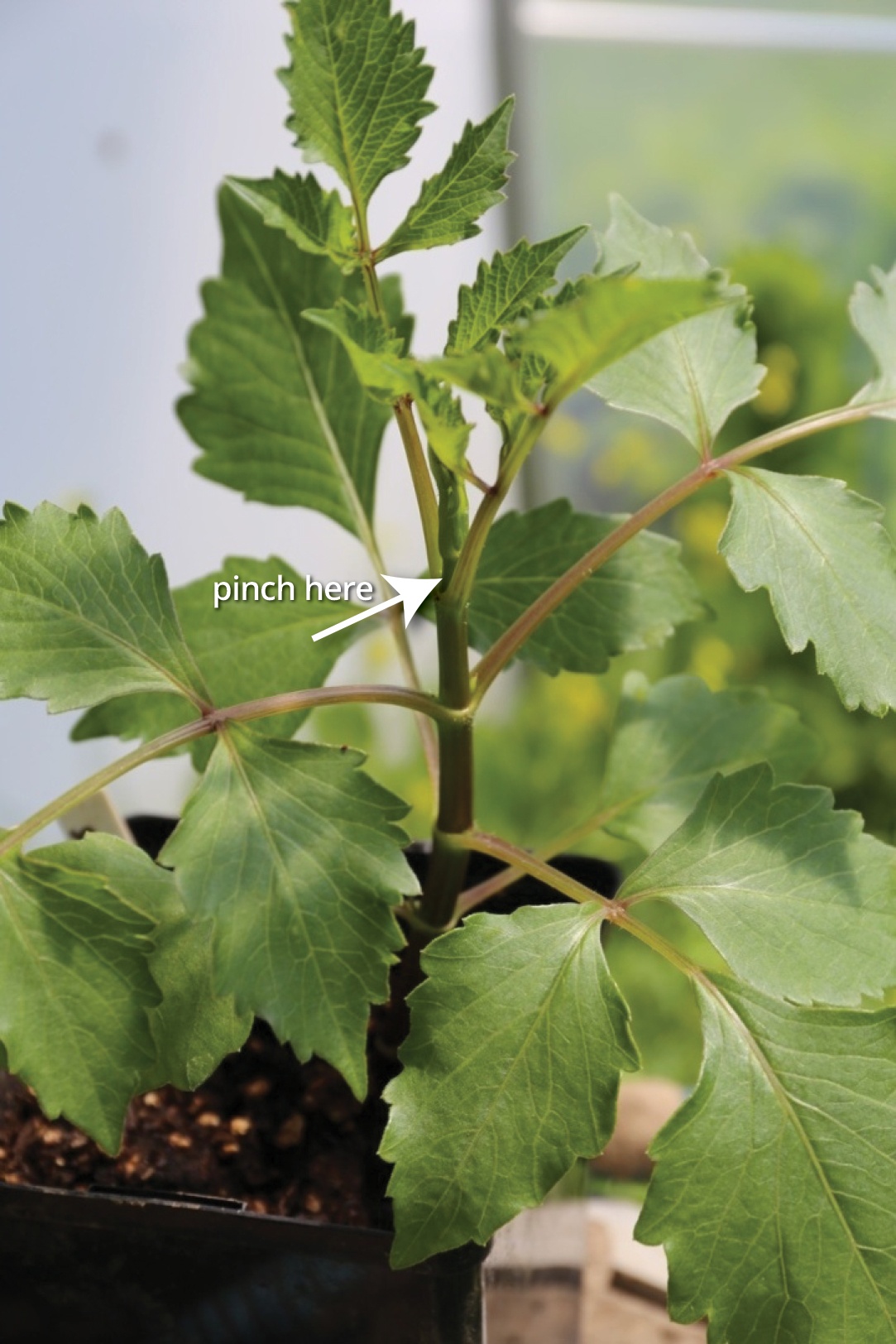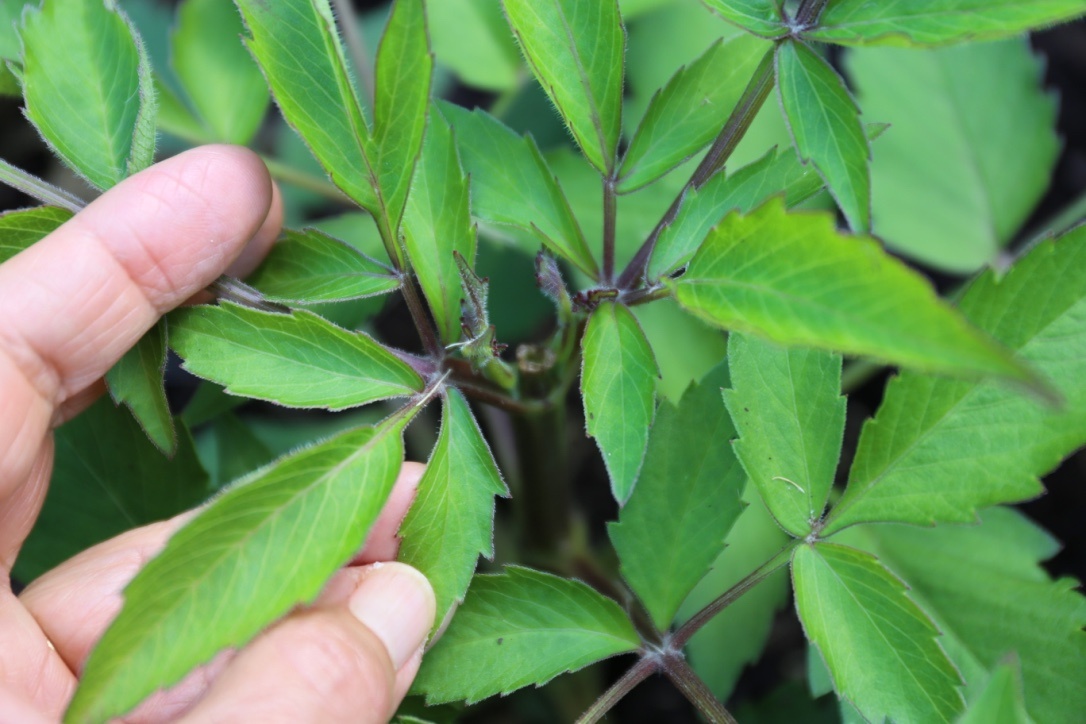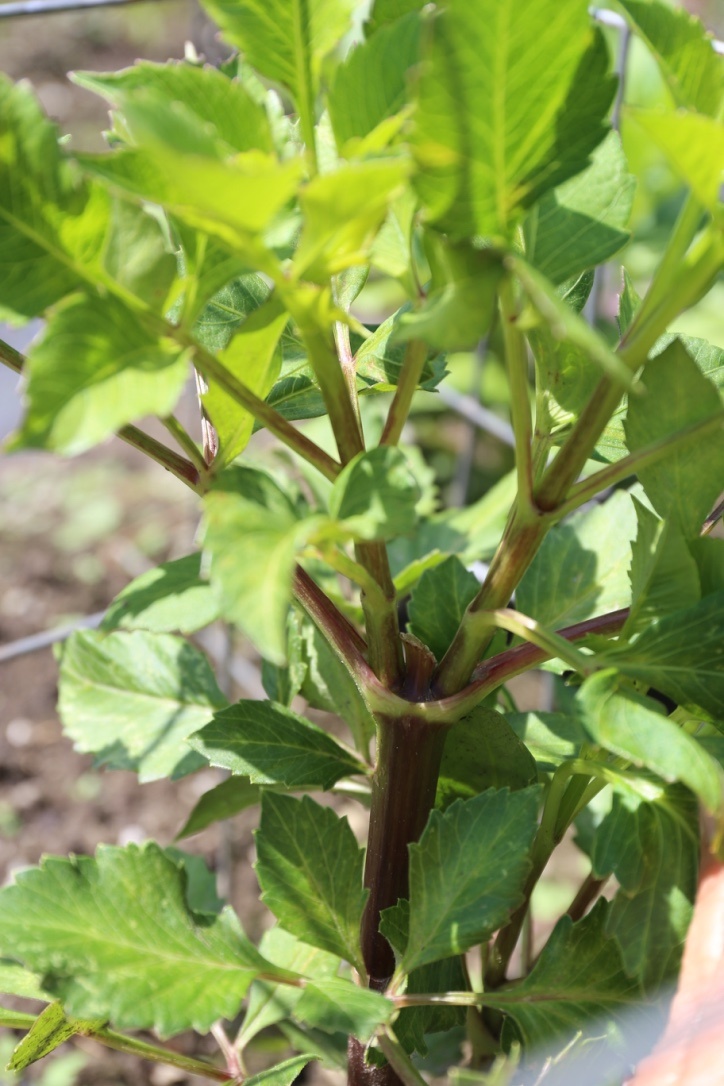Growing Dahlias: How and Why to Pinch Your Plants

To pinch or not to pinch? If that is your question, we say pinch! Though dahlias will grow just fine on their own, one little pinch will give you a stronger, bushier plant with more flowers. This holds true whether you are growing border dahlias, dinnerplates or decoratives.
When to Do It. The best time to pinch a dahlia is when it’s between 12″ and 16″ tall and has at least 4 sets of leaves on the center stalk. At this point the plant is growing rapidly and will quickly recover from being pinched.
How to Do It. Locate the upper-most sprout on the main stem and remove it with your fingers or a pair of scissors. Take care not to damage the stem or nearby leaves. In the photo above, you would pinch out the narrow, upright bud that’s located between the top two leaves.

One week after being pinched.
Why to Do It. Removing the plant’s terminal bud will stimulate lateral buds (lower on the stem) to develop into new stems. Where the sprout was removed, the plant will generate two shoots rather than one.

Above: 3 weeks after being pinched.
Pinching temporarily redirects the plant’s energy toward producing stems and leaves rather than buds. It will take an extra week or two to get flowers, but it’s definitely worth the wait. Your plants will be stronger, fuller and easier to manage. Plus, all those additional growth points will give you many more flowers. A benefit you’ll still be enjoying in October.
During the summer and early fall, when your plants are in full bloom, cutting flowers for bouquets has the same beneficial effect as pinching. It keeps the plants bushy and stimulates more bud production. Removing spent flowers — or deadheading — does the same thing and also helps the plants look their best.
To learn more about growing dahlias, you may want to read: How to Pinch and Stake Dahlias or All About Dahlias.


This is great information! I just purchased 9 dahlias (still sitting in the box on my table), and I have never grown them before, so I’m learning a lot! Please also send instructions for what to do in the fall – Do I need to dig them up before winter? And if so, when? I’m in zone 5/6 (Cleveland, OH).
Hi DJ — You have a fun adventure ahead! We have an article on our website about how to dig and overwinter dahlia tubers. You can find it HERE.
Have gardened over 30 years, however new this year to Dahlias. This is the very best information. Any information for novices is so appreciated, and I’m certain there are many of us.
Hi Paula, Glad you are giving dahlias a try! I also came to them late in my gardening life and that may be why I find them so remarkable. They give a lot for very little effort. Enjoy!
Hey there! Living in Cleveland, I remove the dahlia plant & tuber about October/November. This year was the first year I actually had a dahlia plant/tuber survive the winter & rebloom this season. (Apparently I didn’t remove the whole tuber.) I’m guessing it’s because we had such a mild winter. Dahlias are GREAT!!!
Hi Lauren — Dahlias do often come back in zone 7 if the winter is mild, the tubers are deep and the soil is well drained. I would intentionally give it a try this winter — but dig up your favorites just in case it doesn’t work! Nothing predictable about weather… or gardening. Keeps it interesting!
My leaves turn a light green in August and wondering if I am watering too much?
Hi Susan — Some of my dahlias are doing the same thing. Where I live (New England) it has been a very wet year — especially during June when the plants were developing their root systems. Dahlias definitely do not like to be overly wet and yellowed leaves can be a sign of overwatering. Cutting back on watering is a good strategy. There’s more than a month of dahlia season to come, so hopefully they will grow past the issue!
The yellowing that I see appears here and there, pretty randomly. I am attributing it to a couple things: Wetness (wet weather compounded by heavy soil) and am also thinking some of my tubers may have been planted too deeply (which would make the wetness problem worse).